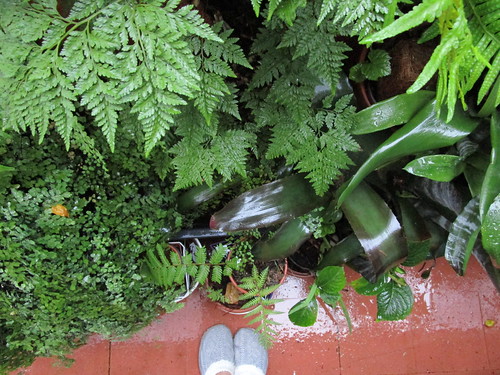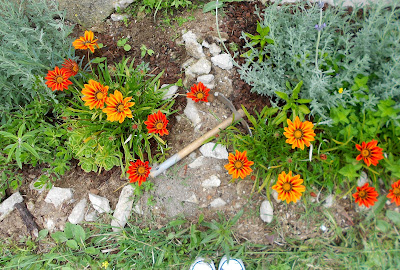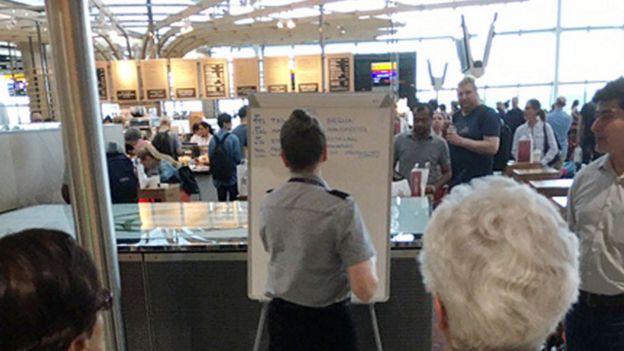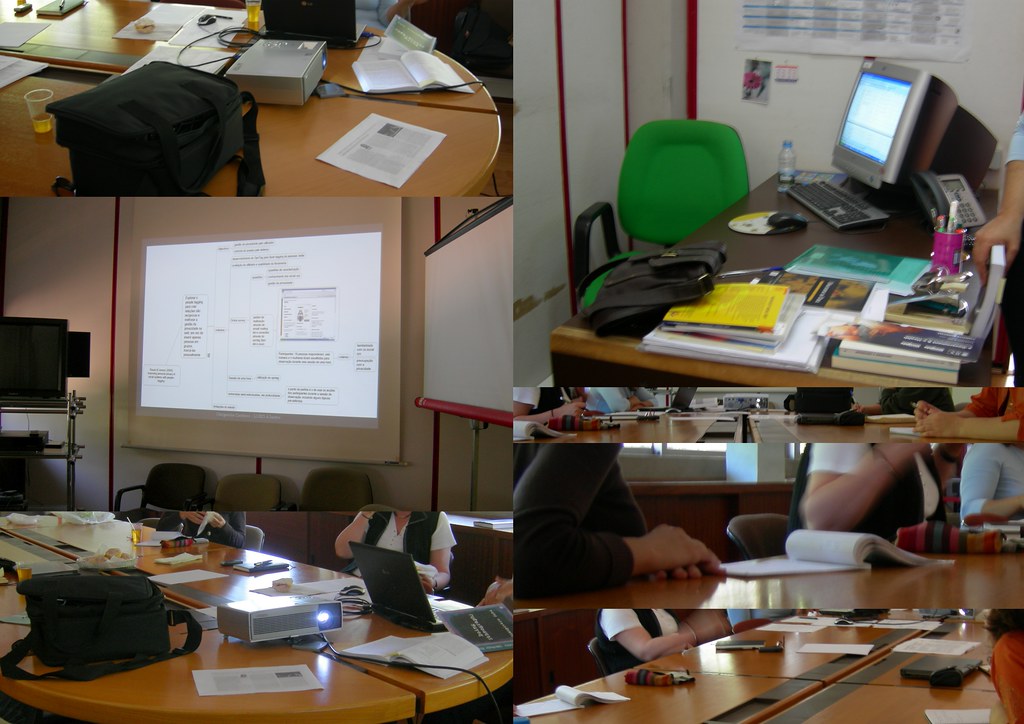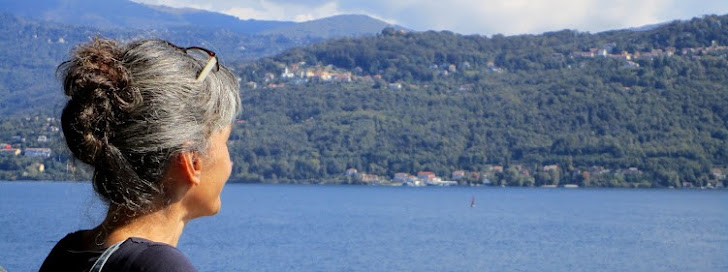
"The person figured here is not an autonomous, rational actor but an unfolding, shifting biography of culturally and materially specific experiences, relations, and possibilities inflected by each next encounter (...) in uniquely particular ways." (Lucy Suchman, Human-machine reconfigurations: plans and situated actions, 2009, 281)
Feb 28, 2018
Feb 22, 2018
connectivity
Feb 19, 2018
Edifício L
Feb 14, 2018
Feb 13, 2018
Feb 10, 2018
Feb 3, 2018
Feb 2, 2018
February
Jan 28, 2018
Jan 27, 2018
Jan 15, 2018
Jan 13, 2018
Jan 11, 2018
Stillness in a mobile world
Jan 7, 2018
Dec 24, 2017
Dec 3, 2017
Nov 25, 2017
Nov 2, 2017
Nov 1, 2017
Morning glory
Oct 20, 2017
European atlas of forest Tree species
European Atlas of Forest Tree Species "is both a scientific publication, in which researchers and forest specialists can find rigorous and up-to-date information on the many tree species of our forests, and a publication suited for education and the dissemination of information about the richness of our forests to our generation and future generations. (...) Each chapter of the Atlas presents, in addition to the description of each tree species, high quality graphics and photographs showing the climatic preferences and singularities of the different species of trees." San-Miguel-Ayanz, J., de Rigo, D., Caudullo, G., Houston Durrant, T., Mauri, A. (Eds.), 2016. European Atlas of Forest Tree Species. Publication Office of the European Union, Luxembourg. Image by Alfonso San Miguel, 2006. Image: Holm oak (Quercus ilex) in spring, Despeñaperros Natural Park (Andalusia, Spain).
Updated link for publication 2021 12 29.
Oct 14, 2017
Passaram 11 anos
... sobre a Resolução do Conselho de Ministros n.º 124/2006 (Diário da República, Série I, de 2006-10-03) onde se anunciava a reviravolta do sistema dos laboratórios do Estado. Entre outras entidades científicas a extinguir, lia-se no ponto 5, do anexo:
"É extinto o Instituto Nacional de Engenharia, Tecnologia e Inovação (INETI), sendo os seus recursos científicos e tecnológicos, humanos e materiais reorganizados e integrados noutros laboratórios, centros tecnológicos, instituições de ensino superior e consórcios a criar. Em particular, as infra-estruturas do INETI transformam-se em parque de ciência e tecnologia com a participação e gestão de universidades, laboratórios associados e laboratórios do Estado e alargam-se a parcerias com empresas, no quadro de projectos definidos, organizando-se ainda como espaço de acolhimento de programas europeus de I&D."
Oct 6, 2017
Sep 23, 2017
fair/fear
Sep 22, 2017
Layers
 |
| September in the garden, 2017. Monica Pinheiro, license CC BY-NC-SA (CC) |
Sep 12, 2017
Do what you can,
with what you have, wherever you are.
 |
| See initial sketch from last year. Monica Pinheiro, license CC BY-NC-SA (CC) |
Aug 29, 2017
increasing diversity
Jun 12, 2017
Jun 11, 2017
May 28, 2017
Apr 24, 2017
Ginko
Feb 2, 2017
(im)mobility systems
"(...) interdependent systems of 'immobile' material worlds, and especially exceptionally immobile platforms (transmitters, roads, garages, stations, aerials, airports, docks) structure mobility experiences. The complex character of such systems stems from their multiple fixities or moorings, often on a substantial physical scale. Thus 'mobile machines', such as mobile phones, cars, boats, aircraft, trains and computer connections, all presume overlapping and varied time-space immobilities. There is no linear increase in fluidity without extensive systems of immobility."Anthony Elliott & John Urry (2010). Mobile Lives. Routledge, p. 20.
 |
October 16, 2009 Image by Monica Pinheiro, license CC BY-NC-SA (CC) |
Feb 1, 2017
Human-Built World
"Technology is messy and complex. It is difficult to define and to understand. In its variety, it is full of contradictions, laden with human folly, saved by occasional benign deeds, and rich with unintended consequences." Hughes, T. P. (2004). Human-Built World: How to Think about Technology and Culture. University Of Chicago Press.
 |
| Image by Monica Pinheiro, license CC BY-NC-SA (CC), November 17, 2009 |
Jan 21, 2017
Paths
Jan 15, 2017
Sep 30, 2016
Carry on
Sep 24, 2016
sketch
Aug 15, 2016
Visualizing energy data
 |
| onsite interactive map shows energy wasted in different sectors |
"By clicking through the chart, you can see exactly how much energy is used for every activity. (...) Almost 1% is used just to pump natural gas around pipelines; 2% goes to making cardboard and other paper products. Around 16% is used to grow, distribute, and cook food. Looking at the total picture helps make the point that some of the ways that we think about energy aren't quite right. Refining petroleum uses about 6% of total energy in the country, but isn't considered when we think about fuel economy in cars. (...) Mining oil and gas uses even more energy." (in link)
Dec 20, 2015
Nov 12, 2015
electricity
"These days, beyond spectacular weather events or spectacular failures like blackouts, electricity hides in plain sight, whether stored in batteries or flowing in the electrical wires that festoon our social landscapes. We conveniently ignore whole electroscapes until something goes awry."
Nov 10, 2015
technology non-use
"Technology non-use offers a fascinating sociotechnical phenomenon worthy of study per se. However, it also provides an opportunity to rethink how we approach, study, and conceptualize human relationships with, and through, technology."
Oct 19, 2015
Oct 8, 2015
information fragmentation
"The findings show (i) the extensive information fragmentation in each individual PIM tool besides cross-tool fragmentation, (ii) the information overload preventing focusing on the subset of fragmented project related information and changing focus over time, and (iii) the importance of support information (information scraps) and its integration into project flow." [pdf]
Sep 4, 2015
Aug 25, 2015
ICT2015 conference
- A policy conference presenting the new Commission's policies and initiatives on Research & Innovation in ICT (Horizon 2020 Programme);
- An interactive exhibition showcasing the best results and impact of most recent EU ICT Research & Innovation;
- Many networking opportunities to enhance quality partnerships, help participants find partners, connect Research and Innovation and trigger collaboration;
- Funding opportunities: ICT 2015 will also be the place to gather information on the 2016-17 Work Programme of Horizon 2020;
- The Startup Europe Forum, offering a set of activities profiling EU policy actions for startups and SMEs, innovators, private and public investors.
Jul 20, 2015
Paper selling (still) growing in digital era
«Ainda é possível vender mais papel na era do digital»: «Não deixa de ser curioso que uma empresa que vende papel esteja a crescer em paralelo com o avanço da digitalização. Ou seja, a Portucel está a vender mais folhas de papel mesmo com a desmaterialização de ficheiros e documentos. “No ano passado até na Europa conseguimos crescer”, nota Diogo da Silveira, “mas é óbvio para nós a grande importância que tem (e vai continuar a ter) o mercado asiático, com especial destaque para a China”» in http://expresso.sapo.pt/economia/2015-07-19-Portucel-quer-quinta-fabrica-em-Portugal
Jul 18, 2015
May 8, 2015
interpreting, changing
Interpreting the World, Changing the World | Noam Chomsky
Can experiencing art lead to better scientists? Reflections and discussions | Samuel Meyler
May 1, 2015
Image as Method
"Image as Method: Ethnography – Photography – Film – Sensation – Perception" is a two-day symposium presented by the Society of Fellows in the Humanities. The symposium is organized by Fellow Brian Goldstone, Lecturer in Anthropology.
Apr 30, 2015
Aviation security issues with paperless option
Paper does not need an occasional reboot, however. (...) "He said, 'My copilot's iPad went black. Exactly 24 minutes after that, mine went black. We were informed it looks like a problem with all the iPads on 737s,' " Jacaruso, 54, recalled. (...) The crew explained that flight plans are transmitted on the iPads, which make them crucial to navigation, said McRell, 43. (...) The glitch came two weeks after the U.S. Government Accountability Office warned that i on-board wifi conceivably could be used to bring down a plane. "Modern aircraft are increasingly connected to the internet. This interconnectedness can potentially provide unauthorized remote access to aircraft avionics systems."Dezenas de voos da American Airlines em terra devido a falha nos iPad, in jornal Expresso:
Uma falha numa aplicação de iPad usada pelos pilotos da American Airlines levou a que cerca de duas dezenas de aviões da empresa não descolassem terça-feira à noite. (...) A responsável de comunicações da companhia, Andrea Huguely, indicou ao "USA Today" que, "em alguns casos, os aparelhos tiveram de regressar até à zona de entrada para acederem a uma rede de wi-fi e resolverem o incidente". "Nós pedimos desculpa aos nossos clientes pelos inconvenientes e nós conseguimos levá-los para os seus destinos passado pouco tempo", afirmou. (...) A American Airlines tornou-se em 2013 a primeira companhia a substituir os planos de voo em papel, de modo a evitar o peso extra que isso representava, passando a transmitir essa informação às tripulações através de iPad.
Dec 28, 2014
Nov 12, 2014
Every Age
Jul 12, 2014
ECIS conference
Nov 19, 2013
Reconfiguring working spaces
"Individuals, like organizations, need to manage information for work (and non-work) related activities, on a daily basis. In order to extend their communication and fulfill information needs, people use artifacts (man made objects), that became increasingly technological, and in turn, these very technological artifacts are increasingly more dependent upon other supporting technologies, widely referred as infrastructures. In order to design information systems that support workers’needs, what do we know about their use of artifacts? Across time? Inside and outside their organizations? And on the move?"
Sep 15, 2013
Accepted
Jun 11, 2013
information overload ca. 1550-1700
"The perception of an overabundance of books led to more books being used in a great variety ways. Alongside the well-established methods of thorough reading and note-taking, which engaged the personal judgment and effort of the reader, early modern scholars also relied on shortcuts to “process” books so as to retrieve items of use with less investment of time and self. (...) The proliferation of inventive methods of and aids to study, whether unique to individuals or spread more widely through official or unofficial teaching, can help us understand better not only the conditions of production of early modern scholarly and pedagogical works, but also the deep roots of the ways in which we, too, cope with what we now call information overload."
Oct 30, 2012
information artefacts on the move
Oct 3, 2012
search for meaning
Jun 15, 2012
plain paper artefact
| Registering in plain paper artefact, June 2011 |





















